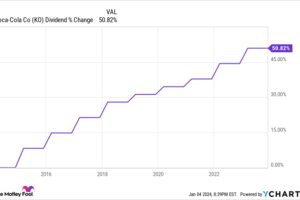
U.S. stocks recorded another week of sharp losses Friday in a downbeat end to a month and quarter wrought by vicious selling that tipped all three major averages into a bear market.
The S&P 500 tumbled 1.5% after trying — and failing — to find its footing earlier in the session, while the Dow Jones Industrial Average erased nearly 500 points, or 1.7%. The technology-focused Nasdaq Composite declined 1.5%.
The Nasdaq and S&P 500 are now in three-quarter losing streaks for the first time since 2009. The Dow also posted a third-straight losing quarter, its first such time since 2015. All of the major indexes are down at least 21% on the year.
The S&P 500’s drop on Friday marked its 50th decline of 1% or more this year, the most downside volatility since 2009, according to Compound Advisors’ Charlie Bilello. For the month, the S&P 500 and Dow were down more than 9%, and the Nasdaq about 5.5%. September’s 9.3% decline for the S&P was its largest one-month percentage decline since March 2020.
On the corporate front, earnings results showed that shifting consumer habits are taking their toll on some of America’s largest companies. Shares of Carnival (CCL) plunged 23% to their lowest since 1993 after the cruise line reported annual bookings and quarterly guidance that disappointed Wall Street.
Nike (NKE) was also a key mover on Friday after the company reported a 44% surge in inventory and outlined other macroeconomic headwinds that weighed on the quarter. Shares plunged 12.8% despite earnings that came in line with expectations and the company reaffirming its full-year fiscal sales outlook.
And chipmaker Micron Technology (MU) shares nudged slightly higher even as the company warned about tough times ahead for PC and smartphone demand and said it was slashing investments. Micron, however, forecast strong revenue growth in the second half of fiscal 2023, projecting a recovery in demand by that point.
The economic data front also produced fresh warning signals for investors. The Federal Reserve’s preferred inflation gauge showed prices climbed more than expected in…
..






